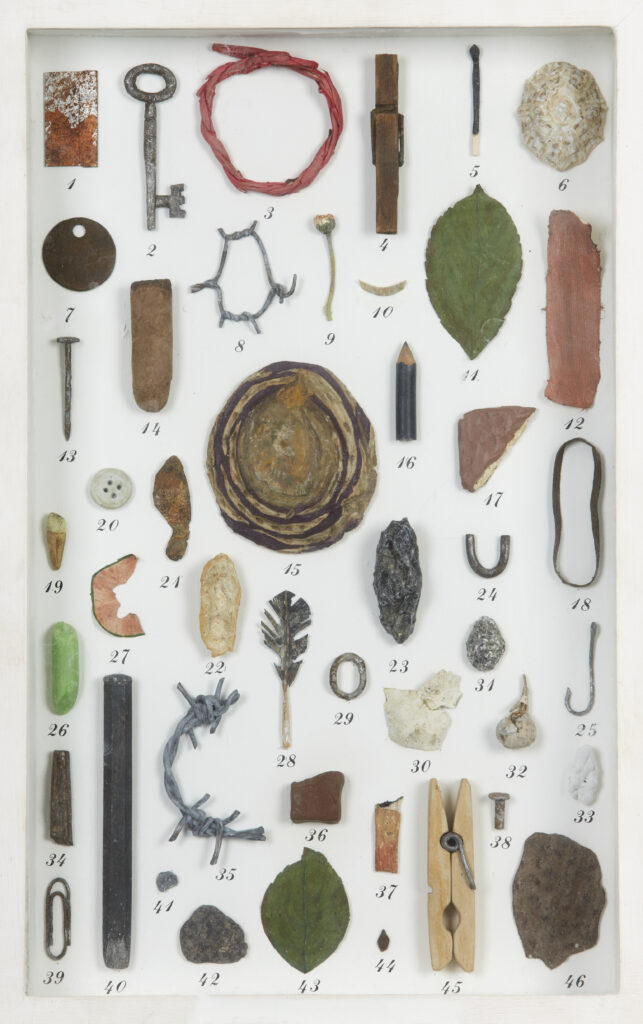46 Discarded Objects enacts a mapping of an environment. It contains a collection of miscellaneous objects that look as though they have been gathered on a walk on an autumn day, and as such, is itself a microcosm of this environment from which its objects originate.
Collecting objects from a walk in nature can be an attempt at grasping onto that moment in time, and perhaps an attempt at claiming ownership over the landscape. But Galloway subverts this. While the objects in the work range from the organic — leaves, feathers, seeds — to the artificial — paperclips, buttons, elastic bands — they are all paper imitations of the real objects they represent. As such, this work also plays with the binary definitions that we use to define the organic and the artificial and, in doing so, also questions this need to control an environment, whether control can truly be achieved, and whether control should be the goal.

